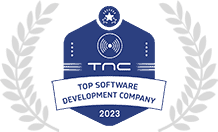In today’s fast-paced digital landscape, the demand for applications has skyrocketed. Businesses are recognizing the need for custom software solutions to meet their unique requirements. However, the traditional development process can be time-consuming and resource-intensive, often requiring specialized skills that many organizations lack. Enter no-code and low-code platforms—revolutionary tools that are reshaping the app development landscape. This article explores the rise of no-code and low-code platforms, their benefits, challenges, and how they are transforming the way applications are built.
No-code and low-code platforms have emerged as game-changers in the realm of app development, enabling businesses to create software solutions without extensive programming knowledge. This shift has democratized app development, allowing individuals from diverse backgrounds to participate in building applications.
1. Understanding No-Code and Low-Code Platforms
Before delving into the implications of no-code and low-code platforms, it’s essential to define what they are.
1.1. No-Code Platforms
No-code platforms allow users to build applications without writing a single line of code. They utilize visual interfaces, drag-and-drop features, and pre-built templates to simplify the development process. Users can create complex applications by simply arranging components and configuring settings.
1.2. Low-Code Platforms
Low-code platforms, while still minimizing the need for coding, offer a bit more flexibility. They provide a visual interface for development but also allow for coding to customize and enhance functionalities. This means that users with some coding skills can extend the capabilities of their applications beyond what the platform offers out of the box.
1.3. Popular No-Code and Low-Code Platforms
Several platforms have gained traction in the market:
- Bubble: A leading no-code platform that enables users to create fully functional web applications without coding.
- OutSystems: A low-code platform designed for enterprise applications, facilitating faster delivery and integration with existing systems.
- Adalo: A no-code platform focusing on mobile app development, allowing users to create apps for both iOS and Android effortlessly.
2. The Growth of No-Code and Low-Code Platforms
The rapid growth of no-code and low-code platforms can be attributed to several factors that have reshaped the app development landscape.
2.1. Increased Demand for Applications
As businesses strive to stay competitive, the demand for customized applications has surged. Organizations are seeking solutions that can quickly adapt to their unique processes, making no-code and low-code platforms an attractive option for rapid application development.
2.2. Shortage of Skilled Developers
The tech industry faces a significant shortage of skilled developers, leading to bottlenecks in application development. No-code and low-code platforms empower non-technical users to contribute to app development, alleviating pressure on development teams.
2.3. Cost-Effectiveness
Building applications through traditional development methods can be expensive, requiring substantial investment in development resources. No-code and low-code platforms significantly reduce development costs by enabling faster creation and deployment of applications with minimal resources.
3. Benefits of No-Code and Low-Code Platforms
The rise of no-code and low-code platforms brings several advantages to businesses and individuals looking to create applications.
3.1. Accelerated Development
One of the primary benefits of no-code and low-code platforms is the speed of development. By eliminating the need for extensive coding, users can build and deploy applications in a fraction of the time compared to traditional methods.
- Rapid Prototyping: These platforms enable rapid prototyping, allowing businesses to test ideas quickly before committing to full-scale development.
- Faster Time-to-Market: Companies can launch applications faster, gaining a competitive edge in their respective markets.
3.2. Empowering Citizen Developers
No-code and low-code platforms empower non-technical users, often referred to as citizen developers, to take part in the app development process. This democratization of development leads to increased innovation and creativity.
- Inclusivity: Individuals from diverse backgrounds, including marketers, project managers, and business analysts, can contribute to app development, fostering a collaborative environment.
- Skill Development: Users can learn valuable skills in app development, enhancing their professional growth.
3.3. Flexibility and Customization
Both no-code and low-code platforms offer flexibility in terms of customization. Users can tailor applications to meet specific business needs without being limited by rigid templates.
- Adaptability: As business requirements change, users can quickly modify applications to reflect new processes or features.
- Integration Capabilities: Many platforms provide integration options with existing tools and systems, enhancing overall functionality.
4. Challenges and Limitations
Despite the numerous benefits, no-code and low-code platforms are not without their challenges. Understanding these limitations is essential for organizations considering adopting these tools.
4.1. Scalability Concerns
While no-code and low-code platforms are excellent for rapid development, they may face scalability challenges as applications grow. Some platforms might struggle to handle increased complexity, leading to performance issues.
- Limited Customization: As applications expand, users may find that pre-built components do not meet their evolving needs, necessitating coding expertise.
- Vendor Lock-In: Companies may become dependent on a specific platform, making it challenging to migrate to a different solution if necessary.
4.2. Security Risks
Security is a critical concern when using no-code and low-code platforms. Since applications are often created by non-technical users, there is a risk of overlooking essential security measures.
- Data Protection: Organizations must ensure that sensitive data is adequately protected within applications built on these platforms.
- Compliance: Ensuring compliance with industry regulations can be more challenging when using no-code and low-code solutions.
4.3. Quality Assurance
The quality of applications built on no-code and low-code platforms may vary, particularly when developed by users without formal training in software development.
- Testing and Maintenance: Ensuring that applications function correctly and remain maintainable requires ongoing attention, which may not be feasible for all organizations.
- Performance Limitations: Some platforms may not offer the performance optimizations available in traditional coding environments.
5. The Future of No-Code and Low-Code Development
As the demand for applications continues to grow, the future of no-code and low-code platforms looks promising. Several trends are expected to shape their development in the coming years.
5.1. Increased Adoption Across Industries
No-code and low-code platforms will see wider adoption across various industries. From healthcare to finance, organizations will recognize the value of empowering employees to create solutions tailored to their specific needs.
- Industry-Specific Solutions: We can expect to see more tailored platforms catering to specific industries, providing features and templates designed for unique business processes.
5.2. Integration with AI and Machine Learning
The integration of artificial intelligence (AI) and machine learning capabilities into no-code and low-code platforms will enhance their functionality. Users will benefit from intelligent features that automate tasks, improve decision-making, and optimize processes.
- AI-Powered Automation: Platforms may incorporate AI-driven tools that suggest improvements or automations based on user behavior and data patterns.
- Enhanced Analytics: Integrating analytics tools will enable users to track application performance and user engagement, facilitating data-driven decisions.
5.3. Evolving Ecosystems and Communities
As no-code and low-code platforms gain traction, we can expect the emergence of vibrant ecosystems and communities. Users will share resources, templates, and best practices, fostering collaboration and innovation.
- Learning Resources: Educational materials and tutorials will proliferate, helping users develop their skills and maximize platform capabilities.
- Networking Opportunities: Communities will provide networking opportunities for users, allowing them to exchange ideas and collaborate on projects.
6. Best Practices for Using No-Code and Low-Code Platforms
To maximize the benefits of no-code and low-code platforms, organizations should adopt best practices that ensure successful implementation and development.
6.1. Define Clear Objectives
Before embarking on app development, organizations should clearly define their objectives. Understanding the purpose of the application and the problems it aims to solve will guide the development process.
- User-Centric Design: Focus on user needs and preferences to create applications that resonate with the target audience.
- Set Realistic Expectations: Be aware of the limitations of no-code and low-code platforms and set realistic expectations regarding what can be achieved.
6.2. Train and Empower Users
To leverage the full potential of no-code and low-code platforms, organizations should invest in training and empowering their employees.
- Training Programs: Offer training programs that equip users with the skills needed to navigate and utilize the platforms effectively.
- Encourage Experimentation: Foster a culture of experimentation where users feel comfortable exploring new ideas and solutions.
6.3. Prioritize Security and Compliance
As with any technology, security should be a top priority when using no-code and low-code platforms. Organizations must implement measures to safeguard sensitive data and ensure compliance with regulations.
- Regular Audits: Conduct regular audits of applications built on these platforms to identify and address potential security vulnerabilities.
- Compliance Checks: Ensure that applications adhere to industry regulations and standards, particularly in sectors with strict compliance requirements.
7. Conclusion
The rise of no-code and low-code platforms marks a significant shift in app development, empowering individuals and organizations to create applications without extensive coding knowledge. These platforms democratize the development process, fostering innovation and creativity across industries. However, it is essential to recognize the challenges and limitations that accompany these tools.
As organizations embrace the future of app development, best practices will play a crucial role in ensuring successful implementations. By defining clear objectives, investing in user training, and prioritizing security, businesses can leverage the power of no-code and low-code platforms to drive digital transformation.
FAQs
- What are no-code and low-code platforms?
- No-code platforms allow users to create applications without coding, while low-code platforms require minimal coding for customization.
- What are some popular no-code platforms?
- Bubble, Adalo, and Webflow are popular no-code platforms for building web and mobile applications.
- Can businesses save costs using no-code and low-code platforms?
- Yes, these platforms significantly reduce development costs by enabling faster application creation without extensive resources.
- Who can use no-code and low-code platforms?
- Anyone can use these platforms, including non-technical users, marketers, and business analysts.
- What industries benefit from no-code and low-code development?
- Many industries, including healthcare, finance, and retail, can benefit from these platforms for custom application development.
- Are there limitations to using no-code and low-code platforms?
- Yes, challenges may include scalability issues, security risks, and quality assurance concerns.
- How do no-code and low-code platforms accelerate development?
- They streamline the development process with visual interfaces and pre-built components, reducing the time needed to create applications.
- What is a citizen developer?
- A citizen developer is a non-technical user who creates applications using no-code or low-code platforms.
- What security measures should organizations take when using these platforms?
- Organizations should conduct regular audits, prioritize data protection, and ensure compliance with industry regulations.
- Can no-code platforms handle complex applications?
- No-code platforms are suitable for less complex applications, while low-code platforms can manage more complex solutions with coding.
- What is the future of no-code and low-code development?
- The future includes increased adoption across industries, integration with AI, and the growth of user communities.
- How can organizations train employees on no-code platforms?
- Organizations can implement training programs, workshops, and online resources to help employees learn these platforms.
- What role does AI play in no-code and low-code platforms?
- AI enhances functionalities, automates tasks, and provides insights to improve application performance.
- How can organizations ensure quality in applications built on these platforms?
- Regular testing, user feedback, and maintenance are essential to ensure application quality.
- What challenges do citizen developers face?
- Citizen developers may encounter limitations in functionality, security concerns, and lack of technical support.
- What are some examples of low-code platforms?
- OutSystems, Mendix, and Microsoft Power Apps are examples of low-code platforms widely used in the industry.
- Can no-code platforms integrate with existing tools?
- Yes, many no-code platforms offer integration options with popular tools and software for enhanced functionality.
- How can businesses benefit from rapid prototyping?
- Rapid prototyping allows businesses to test ideas quickly, gather feedback, and make necessary adjustments before full-scale development.
- What factors should businesses consider before adopting no-code or low-code platforms?
- Businesses should evaluate their specific needs, the complexity of required applications, and the skills of their workforce.
- Are no-code and low-code platforms suitable for startups?
- Yes, these platforms are ideal for startups as they allow for quick development, testing of ideas, and cost-effective solutions.
- How to Be a Flutter Developer - November 22, 2024
- How to Build an iOS App in Flutter - November 22, 2024
- How to Build APK in Flutter VS Code - November 21, 2024




















